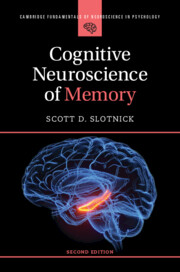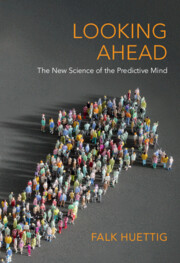Refine search
Actions for selected content:
125 results
The production, online processing, and offline comprehension of non-canonical structures in Mandarin-speaking children with Developmental Language Disorder
-
- Journal:
- Applied Psycholinguistics / Volume 46 / 2025
- Published online by Cambridge University Press:
- 22 December 2025, e48
-
- Article
-
- You have access
- Open access
- HTML
- Export citation
33 - Psycholinguistic Perspectives on Language Change
- from Part IV - Modelling the Record: Methods and Theories
-
-
- Book:
- The New Cambridge History of the English Language
- Published online:
- 18 October 2025
- Print publication:
- 16 October 2025, pp 820-845
-
- Chapter
- Export citation
13 - Cognitive and Neural Aspects of the Multilingual Mental Lexicon
- from Part IVA - Building Cognitive Brain Reserve and the Importance of Proficiency
-
-
- Book:
- The Cambridge Handbook of Language and Brain
- Published online:
- 12 December 2025
- Print publication:
- 09 October 2025, pp 339-370
-
- Chapter
- Export citation
How speaker cooperation and knowledge prime scalar implicatures
-
- Journal:
- Language and Cognition / Volume 17 / 2025
- Published online by Cambridge University Press:
- 25 September 2025, e75
-
- Article
-
- You have access
- Open access
- HTML
- Export citation
Interaction does not lead to spontaneous category-based conditioning in an artificial language
-
- Journal:
- Language and Cognition / Volume 17 / 2025
- Published online by Cambridge University Press:
- 19 September 2025, e74
-
- Article
-
- You have access
- Open access
- HTML
- Export citation
The influence of text segmentation on garden path processing: evidence from self-paced reading and eye-tracking
-
- Journal:
- Language and Cognition / Volume 17 / 2025
- Published online by Cambridge University Press:
- 24 July 2025, e58
-
- Article
-
- You have access
- Open access
- HTML
- Export citation
Priming for protection: inducible attachment-resistance to ectoparasitic mites in Drosophila
-
- Journal:
- Parasitology / Volume 152 / Issue 9 / August 2025
- Published online by Cambridge University Press:
- 10 July 2025, pp. 897-908
-
- Article
-
- You have access
- Open access
- HTML
- Export citation

Cognitive Neuroscience of Memory
-
- Published online:
- 12 June 2025
- Print publication:
- 30 January 2025
-
- Textbook
- Export citation

Looking Ahead
- The New Science of the Predictive Mind
-
- Published online:
- 20 March 2025
- Print publication:
- 06 March 2025
Gender and generosity: does degree of anonymity or group gender composition matter?
-
- Journal:
- Experimental Economics / Volume 13 / Issue 3 / September 2010
- Published online by Cambridge University Press:
- 14 March 2025, pp. 299-308
-
- Article
- Export citation
Subliminal influence on generosity
-
- Journal:
- Experimental Economics / Volume 20 / Issue 3 / September 2017
- Published online by Cambridge University Press:
- 14 March 2025, pp. 531-555
-
- Article
- Export citation
Chapter 6 - Accessing the Remainders of Mental Representations and Filling in the Gaps
- from Part II - Psychological Theories
-
- Book:
- Looking Ahead
- Published online:
- 20 March 2025
- Print publication:
- 06 March 2025, pp 46-59
-
- Chapter
- Export citation
Chapter 2 - Defining Prediction
- from Part I - Setting the Stage
-
- Book:
- Looking Ahead
- Published online:
- 20 March 2025
- Print publication:
- 06 March 2025, pp 12-17
-
- Chapter
- Export citation
Chapter 7 - Implicit Priming and Active Forecasting
- from Part II - Psychological Theories
-
- Book:
- Looking Ahead
- Published online:
- 20 March 2025
- Print publication:
- 06 March 2025, pp 60-73
-
- Chapter
- Export citation
Relative contributions of predictive vs. associative processes to infant looking behavior during language comprehension
-
- Journal:
- Journal of Child Language / Volume 52 / Issue 6 / November 2025
- Published online by Cambridge University Press:
- 10 February 2025, pp. 1225-1248
-
- Article
-
- You have access
- Open access
- HTML
- Export citation
8 - Behavioral Evidence and Experimental Methods
- from Part II - Methodological and Empirical Foundations of Constructional Research
-
-
- Book:
- The Cambridge Handbook of Construction Grammar
- Published online:
- 30 January 2025
- Print publication:
- 06 February 2025, pp 196-219
-
- Chapter
- Export citation
6 - Frequency
- from Part II - Methodological and Empirical Foundations of Constructional Research
-
-
- Book:
- The Cambridge Handbook of Construction Grammar
- Published online:
- 30 January 2025
- Print publication:
- 06 February 2025, pp 149-170
-
- Chapter
- Export citation
10 - False Memories: Spreading Activation in Memory Networks
- from Part III - Mind
-
- Book:
- Behavioral Network Science
- Published online:
- 08 November 2024
- Print publication:
- 19 December 2024, pp 143-160
-
- Chapter
- Export citation
Chapter 4 - Sequential Effects
-
- Book:
- Human Memory
- Published online:
- 17 January 2025
- Print publication:
- 19 December 2024, pp 89-107
-
- Chapter
- Export citation

Writing for the Reader's Brain
- A Science-Based Guide
-
- Published online:
- 12 December 2024
- Print publication:
- 12 December 2024
